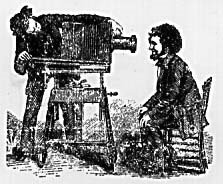Homesick by Joshua Hale Fialkov, illustrated by Micah Farritor
From Postcards: True Stories that Never Happened
Plot: Based on a postcard written by an American in France at the start of the Great Depression, this story shows a snapshot of life for Marj and Frank, two Americans in 1930s Paris. While Frank is thrilled with Paris and happy they scrimped and saved for this, their shared dream, Marj hasn’t adjusted well to the weather, people, or attitudes of Paris and wants to go home. This drives a quiet, awkward wedge between the couple as we see Frank somewhat pretentiously becoming “Francois” leaving “Marjorie” floundering, alienated in the big city.
Main issues, themes, ideas: Like a lot of the short stories present in this collection (if not all of them), Homesick revolves around the feelings of loss and loneliness. Marj yearns to go back to her American home, feeling out of place in the foreign city. Her husband is sort of leaving her as well, by trying to turn himself into someone else and assimilate into this place that Marj doesn’t like. This story also invokes the idea of the city, since it is set in Paris and location is a focal point in the story – Marj wants to go home, Frank admires the skyline and calls it “paradise”, and the large last panel is Marj left alone, dwarfed under the shadow of the Eiffel Tower. Once again, here the city is an imposing, important ‘character’ in the story, where people can lose themselves or take on new identities.
Visual style: The style used in Homesick is unique amongst the stories in Postcards. Unlike a lot of graphic novels illustrated with harsh shadows and a very two-dimensional feel to them, the images in Homesick have a melting, smudgy, feel to them, almost like watercolors. While some of the other stories are visually more dramatic or noir-ish (Quarantine) or look like a comic out of the Sunday newspaper (Time), these illustrations are very muted, cloudy, and gray. The watery, runny grays help communicate to the reader the experience of the dreary weather that the protagonist is so depressed by, and the muted style further reinforces Marj’s impression of the pretty but bleak setting. The portrayal of the setting itself provides a large, empty, space that emphasize the long, awkward silences in the story, echoing the quiet displeasure and soft anguish of the characters.
announcements
This blog was created by and for students in an Introduction to Cultural Studies class at the University of Washington. Through an investigation of urban experience and representation--in theory, in graphic novels and in our own "readings" of Seattle's University District--we considered the formation and history of cultural studies as an (anti)discipline, with a special emphasis on the questions, "What does cultural studies do, and how do you do cultural studies?"
If you'd like to know more about the class, the blog or our U-District artifact project, please contact Gabrielle Dean: gnodean@u.washington.edu.
If you'd like to know more about the class, the blog or our U-District artifact project, please contact Gabrielle Dean: gnodean@u.washington.edu.
Subscribe to:
Post Comments (Atom)
blog archive
-
▼
2008
(92)
-
▼
May
(26)
- Seattle U District: City Artifacts Map
- City Artifacts: What and Where?
- Researching History and its Representations...
- Palestine
- Persepolis 1 & 2
- Shutterbug Follies
- A Scanner Darkly
- Maus I & II
- A Scanner Darkly
- Maus I & II
- Shutterbug Follies
- Persepolis 1 and 2
- Postcards: True Stories that Never Happened
- Maus I & II
- Postcards: True Stories that Never Happened
- Persepolis 1 & 2
- Mail Order Bride
- Mail Order Bride: Mark Kalesniko
- Persepolis 1 & 2
- Shutterbug Follies
- Maus I and II
- Palestine
- Postcards: True Stories That Never Happened
- PALESTINE
- Postcards: True Stores That Never Happened
- Shutterbug Follies
-
▼
May
(26)

2 comments:
I agree with you that the the city plays a major roll in this story. This is the only example that I can think of where the city is one of the main themes to the plot. You make a very good point about the very last scene where Marj is walking with the Eiffel Tower towering over her. This really reinforces the idea that the city has the ability to take over a person's identity.
I also found the visual style to resemble watercolors. That style is unique to the anthology.
Hi, Jason clued me into this discussion of Postcards stories, and I'm glad our book is out there making people think. I'm the artist for Homesick, and I'm glad you noticed the city. When illustrating the story, I tried to make Paris, one of the livliest cities in the world, feel like a ghost town. Isolation, and neglect were the feelings Josh and I tried to stir up. I hope you found the story interesting and enjoyed it.
Post a Comment